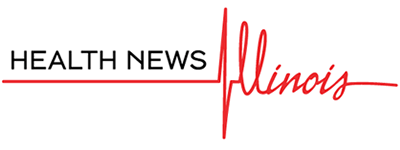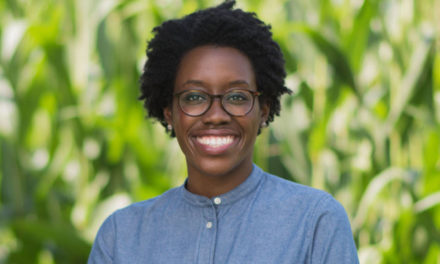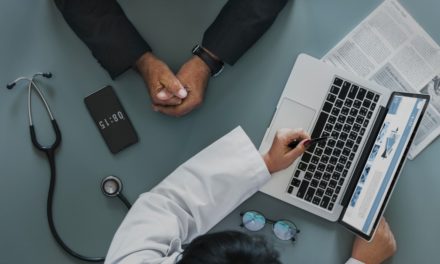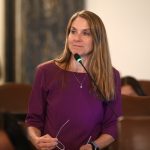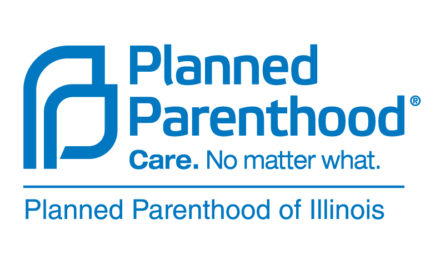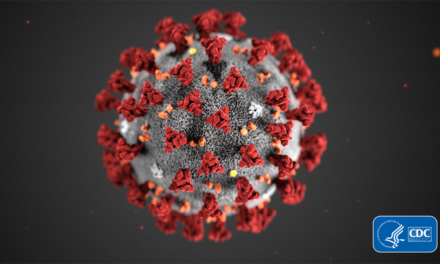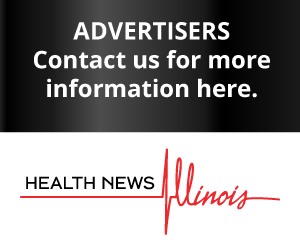
Panelists discuss steps taken to address health equity, impact of telehealth
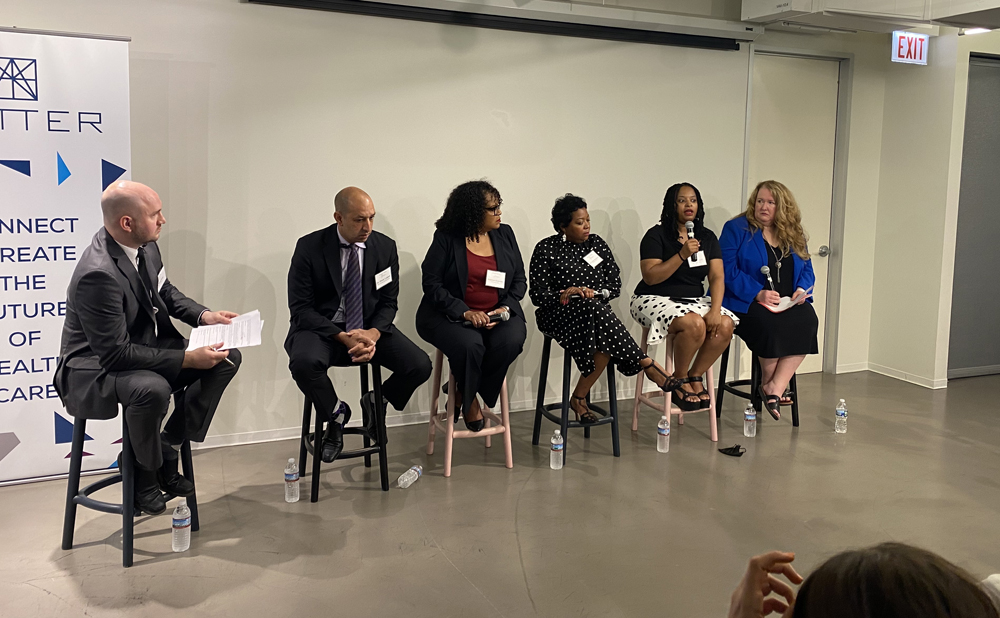
Health leaders at a Health News Illinois panel this week weighed in on what steps they’re taking to address health equity, what policymakers can do to move the needle further and what role telehealth could play.
Panelists were:
Dr. Omar Lateef, CEO, Rush University Medical Center
Ayesha Jaco, Executive Director, West Side United
Shannon Andrews, Chief Equity and Inclusion Officer, Cook County Health
Rep. LaToya Greenwood, D-East St. Louis
Theresa Eagleson, Director, Department of Healthcare and Family Services
Edited excerpts below:
HNI: What steps are you taking to address health equity?
Omar Lateef: Health equity has been a challenge in healthcare for decades. And the fact that we’re still having conversations about whether or not it’s an issue is a problem. It’s a problem that’s affecting our country at large. And pre-pandemic, you would have to go to a room and describe why one of the pillars of our strategic plan is to address health equity in our community. We would literally have to explain what that meant to a roomful of people, despite the fact that just about every disease that has been studied for decades has shown a worse mortality in people of color than in Caucasians. And so that fact has existed for years, and so we built in our strategic plan a desire to change that. We said we’re going to decrease the death gap.
So the frustrating part of that was going to explain to people in healthcare what a death gap actually is. When COVID came, it forced the country to watch it in real time. And so you couldn’t hide behind data. Every committee, every government organization, every healthcare leader, you get more press out of publishing something that shows there’s inequity, than actually trying to solve it.
And so what we’ve done as an organization was to say, ‘Alright, let’s shift from arguing about who’s going to publish this disease has a worse outcome in this population, to let’s figure out how to fix it.’ In the midst of that, when COVID came, the entire world – not country – the world watched inequity. But our country, having the most advanced healthcare, watched this in droves, to have three times higher mortality in a lack and Brown population than the white population. What we did was say, ‘This is our time to take those actions in that strategic pillar and those words and make it into action.’
And so what we effectively did was open our hospital up to safety-net hospitals and transferred in patients that we felt had the highest mortality and a lack of access to resources. And when we did that, in a three-month period, we took over 1,000 patients and their outcomes … were amongst the best in the country, which tells you that one of two things is true. Either there’s all this missing in different populations, access to life-sustaining healthcare that many of us have and take for granted, or there was some genetic abnormality that magically disappeared when you crossed into a new building.
Since that didn’t happen, the reality of what Rush did was put in front of us. We’ve had a mission that said these inequities are real, and then we took that to light during the pandemic to see if we can change it. And the impact was profound. The fact that lives were saved was symbolic that it is a solvable problem. Now the issue shifts to all of us to say, ‘Is it scalable?’
Shannon Andrews: We created the Change Institute, it is really in (Cook County Health CEO Israel Rocha’s) words, a think and a do tank. We are trying to figure out how do we level up, if you will, how do we take all of the hard work that we’ve done over the last couple years, how do we take the lessons learned in the last two years?
… The Change Institute, what we’re going to be doing is leveraging those partnerships, looking at clinical outcomes. We want to take that same energy that we all in this very room put into standing up vaccinations centers, standing up testing centers,and providing the tools and resources that they needed in terms of addressing the pandemic. We want to take that same energy and effort into Change Institute to really be laser-like focused on some of the clinical outcomes … and leveraging some of the partnerships and relationships that have been built over the last two years.
LaToya Greenwood: I would like to highlight two things. I’m a member of the Black Caucus in our Legislature. As many of you know, one of the pillars that we addressed dealt with healthcare equities and systemic racism. So that was one thing we were able to pass, an omnibus bill, which addressed a lot of systemic racism issues. And we had, in the state of Illinois, the governor was an excellent, amazing partner in that. So we were able to implement with the help of Director Eagleson and some others in state government to push laws and the things we put in place throughout the state of Illinois. I would also like to highlight HB4645, which was my bill that addressed the issue of creating healthcare representation scholarship grant programs for members of minority communities. Because we do understand that in order to deliver quality healthcare to some of the most underserved communities, we would like to have members of the healthcare profession that look like us and to be able to address us properly and understand where we’re from and where we’re going in terms of our healthcare.
Ayesha Jaco: We have the privilege of working with our health institutions, Rush, Cook County Health, Lurie, Ascension and Sinai, to help them deliver on their promise to the community, which is around being more intentional about the economic vitality for West Side residents, the neighborhood and those environments, focusing specifically on social detect investing and healthy food access, looking at conditions like maternal health disparity, hypertension, and then thinking about education, access to internships.
If we look at the last two years, we like the rest of the world have had seats at the table thinking about COVID response. And so that meant co-chairing Mayor (Lori) Lightfoot’s, racial equity rapid response team, helping to deploy and organize leading organizations, not just on the West Side, but across the city to mitigate with a data-driven response in Black and Brown communities. So that’s been a space that’s now transitioned into the vaccine equity phase in the last year. And now we’re leading Healthy Chicago Equity Zone for the west region. And so that’s been standing up vaccine equity efforts via vaccination and things, testing across seven communities on the West Side and then being nestled in a citywide initiative. And that work, we’re working a lot with the Medicaid transformation efforts … We’re mainly looking at some of the core causes and conditions that are aiding in the life expectancy gap. So with that, there is a deployment of (community health workers), working with the CEOs, doing the screening of social determinants. And then for us, what’s top of mind is changing life expectancy due to COVID. So really thinking about our North Star and how we’re going to organize and deepen partnerships.
Theresa Eagleson: The minute Gov. (JB) Pritzker first came in the door, we’ve been talking about how healthcare is a right, not a privilege. And a big part of that is how do you really get quality healthcare to everyone? … As the largest payer of healthcare in the state of Illinois, I feel like our job is to incentivize and bring people together and focus on these issues. And we were trying to do that before COVID. Sadly, I hate that we had to go through that. I feel like though in some ways some of the things that we were trying to do actually became reality. It’s actually easier to focus on once we started seeing – I mean, it’s heartbreaking that we had to go through that to get here, right? But we were already working on things like healthcare transformation collaboratives … Long-term care rate reform is another thing. We’ve been talking about it for three years, but it took the risk of horrible inequitable treatment of Black and Brown people in nursing homes to really get people to focus on changes. Change is hard, right? And we all want to, I think the majority of us all want to do the right thing, but how do you really put that focus on what’s important to us?
HNI: What more can policymakers do?
LaToya Greenwood: One of the biggest issues is around reproductive health and abortion and access to abortion and reproductive health. We are working on additional legislation to make sure that Illinois remains a leader in that, in terms of access to reproductive health for women and families all across our state.
HNI: How important are collaborations?
Ayesha Jaco: With COVID, we worked more closely with the city, with HFS, we’re doing more work across in our collaborative space, just working with communities in a way that we hadn’t before. So we need to continue to install and figure out what we can do, what we can bring to the table, and then match that with other industries and match that with policy. So there’s enormous potential, but when we talk about funding, we’re still getting funds or dollars earmarked for equity. And that should be the standard. And so we want to continue to work through that and push for that and philanthropy and other places. But it is the intentionality of the healthcare institutions that we’ve worked with that stepped up to the plate, and we want to continue that series in other spaces. And we know that this model, it works, we just need more partners around the table and more people to roll up their sleeves.
HNI: Is telehealth a tool that can help address disparities?
Ayesha Jaco: I know for us when we thought about how we were going to support communities and they came with their list of what they needed, it was getting internet access for students to be able to do remote learning successfully. So we did work and supported our community partners in that way … There were several barriers. There still are, when you think about the digital divide.
So when we think about telehealth, we have our partners at Sinai that are working on a partnership with Microsoft to do some self-monitoring for patients … to track their health and connect with doctors, et cetera. And so the barriers there: not everybody has an iPhone, not everybody has a government phone, not everyone has internet access. So we still need to think about what standards need to be in place for that to have an equitable impact across our different communities and what that looks like. There are language barriers. There are a lot of access points that are still very much aiding in this digital divide. So we’re still a long way away in terms of having an impact in a way where that could be a strategy when we think about decreasing life expectancy.
Omar Lateef: I think that telehealth was amazing during the pandemic. I think it allowed us to transition to get care, I think it will open up access. But in no way is it a solve for inequity. It’s a little bit of a red herring. It’s getting so much praise across the country in some circles for a variety of reasons. And it’s also getting not reimbursed as much in the future, so it’s hard to know what that balance is going to be. But in the end, giving the right care to the right patient at the right time is the role of every healthcare provider, and telehealth is absolutely part of it.
LaToya Greenwood: Telehealth should be considered as, ‘in addition to.’ So it shouldn’t be solely used in one community as the only option that people have. It should be in addition to in-person care. Because nothing beats in-person or seeing a doctor over a long period of care in-person.
